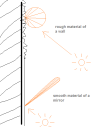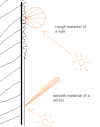First, these are two different topics I want to kill with one thread, and not necessarily related to each other as the title might suggest. Though you can tell me otherwise if that happens to be the case. Second, I want to be clear that when I make these threads I'm working from what is largely only a practical knowledge of pre OpenGL 2.0 fixed function/software techniques from when I spent 1998 to 2004 as a hobbyist programmer banging my head against the OpenGL spec on my own and eventually burning out. Or alternately from what I've cobbled together from this forum, gamasutra, hundreds of interviews and generally just from being the obsessive fans of games and graphics I am. So forgive me and correct me when I project faulty assumptions based on what I generally know about some of the fundamentals of rendering.
* * *
Anyway, back to the point. I booted up Halo Infinite for the first time in a year, palled around on some the community created forge maps (which are wild and impressive, frankly) and noticed something about some of the lighting, made more obvious in forge maps because player place lights don't seem to cast shadows, presumably for performance reasons. From what I'm observing, Infinite weirdly treats a lot of lights as if they only existed in shader/texture/material space. Rather than cast these lights on the scene, via a deferred lighting pass or otherwise, allowing them to illuminate whatever they come in contact with, these lights only really seem to exist when they are reflected in glossy materials within their vicinity. So where there should still be light cast on the ground or some similar matte structures in the area, there isn't; it's only showing up reflected in the material space of these glossy objects, like some paradoxically dynamic cubemapped reflections. And while matte and glossy objects certainly reflect light differently, light obviously doesn't ignore matte surfaces when a pool of it is illuminating some space.
If I'm right about this technique I could imagine the performance advantage and its appeal as an optimization trick but it has the effect of making Infinite's lighting feel flatter and less robust as a result, which just adds to this game's visual woes. And if that's the case, part of me wants to plead with the industry to skip this trick. But that's coming from someone who wishes games prioritized lighting before almost any other graphical feature, so yeah. Maybe Dark10x and our own Dictator touched upon something like this in their tech analysis, but I don't remember.
* * *
For the other question, it's pretty simple: why does modern TAA produce such a soft image without additional sharpening? Is it just a consequence of the filmic TAA tecniques or is it filmic TAA in concert with PBR materials and other aspects of the average pipeline these days? I can basically grasp why softness/vaseline is endemic to TAA as it does its thing with the previous frame but I struggled to grasp the degree of softness i see sometimes, a softness that seems to extend beyond just the vaseline on lens but in the texture rendering itself. I dunno. I'm out of my depth on this one but I would appreciate a rough explanation
Sorry for the wall of text as usual
edit: and if I'm at all right, this obviously isn't true of all of Infinite's lighting, only some of it.
* * *
Anyway, back to the point. I booted up Halo Infinite for the first time in a year, palled around on some the community created forge maps (which are wild and impressive, frankly) and noticed something about some of the lighting, made more obvious in forge maps because player place lights don't seem to cast shadows, presumably for performance reasons. From what I'm observing, Infinite weirdly treats a lot of lights as if they only existed in shader/texture/material space. Rather than cast these lights on the scene, via a deferred lighting pass or otherwise, allowing them to illuminate whatever they come in contact with, these lights only really seem to exist when they are reflected in glossy materials within their vicinity. So where there should still be light cast on the ground or some similar matte structures in the area, there isn't; it's only showing up reflected in the material space of these glossy objects, like some paradoxically dynamic cubemapped reflections. And while matte and glossy objects certainly reflect light differently, light obviously doesn't ignore matte surfaces when a pool of it is illuminating some space.
If I'm right about this technique I could imagine the performance advantage and its appeal as an optimization trick but it has the effect of making Infinite's lighting feel flatter and less robust as a result, which just adds to this game's visual woes. And if that's the case, part of me wants to plead with the industry to skip this trick. But that's coming from someone who wishes games prioritized lighting before almost any other graphical feature, so yeah. Maybe Dark10x and our own Dictator touched upon something like this in their tech analysis, but I don't remember.
* * *
For the other question, it's pretty simple: why does modern TAA produce such a soft image without additional sharpening? Is it just a consequence of the filmic TAA tecniques or is it filmic TAA in concert with PBR materials and other aspects of the average pipeline these days? I can basically grasp why softness/vaseline is endemic to TAA as it does its thing with the previous frame but I struggled to grasp the degree of softness i see sometimes, a softness that seems to extend beyond just the vaseline on lens but in the texture rendering itself. I dunno. I'm out of my depth on this one but I would appreciate a rough explanation
Sorry for the wall of text as usual
edit: and if I'm at all right, this obviously isn't true of all of Infinite's lighting, only some of it.
Last edited:


